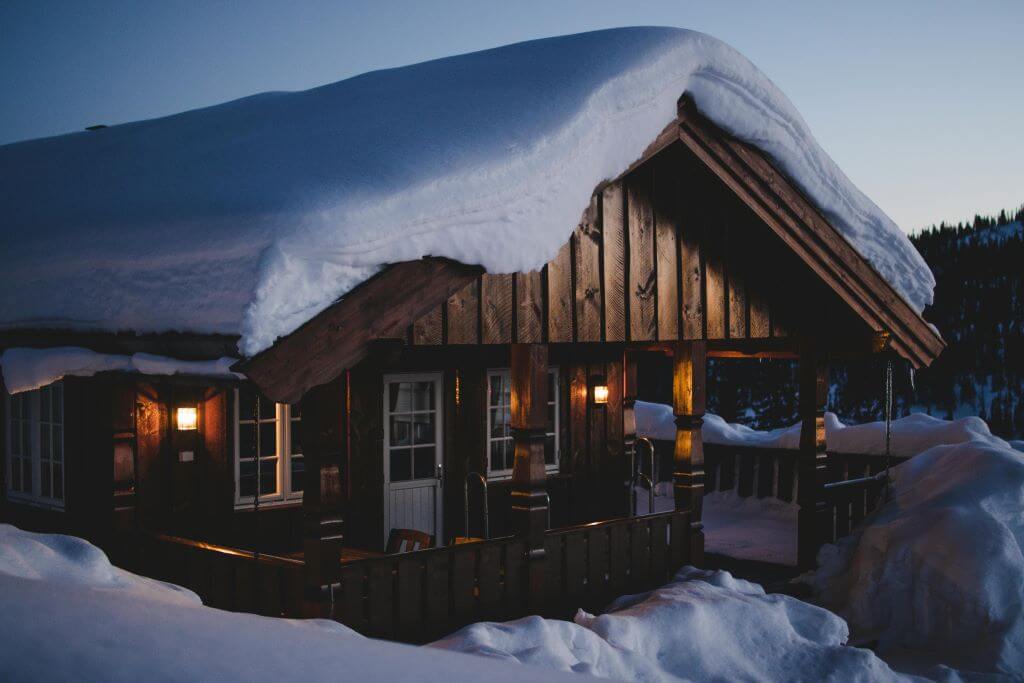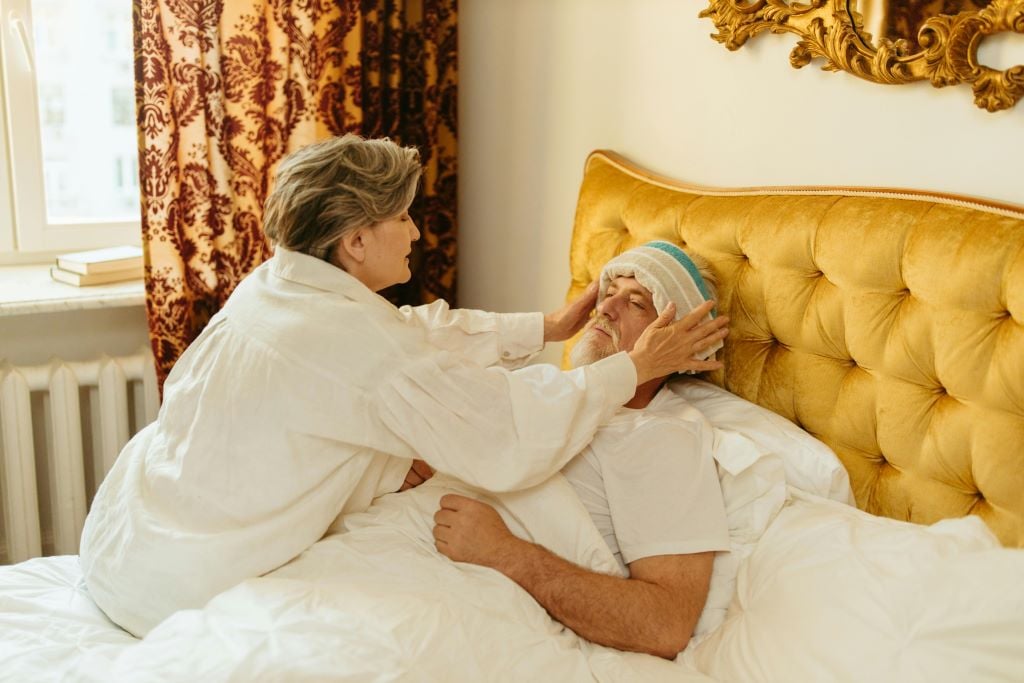In her book “Snow Like Ashes, " Sara Raasch wrote, “Even the strongest blizzards start with a single snowflake. This hits very close to home for many older adults due to the discomfort and unique risks they anticipate experiencing as winter approaches.
People who may already be facing physical challenges are at an increased risk for accidents and health issues brought about by lower temperatures and icy conditions. For caregivers and older adults alike, proactively addressing these winter-specific risks with some home maintenance projects can mitigate this concern by providing a comfortable, safe home environment.
National Council on Aging statistics show that approximately 1 in 4 older Americans falls each year, often leading to serious injury, and winter weather increases this risk. A National Fire Protection Association study found that nearly half of all home heating fires occur in December, January, and February, underscoring the importance of safe heating practices during winter.
In this guide, we’ll cover essential winter home maintenance tasks that seniors or their caregivers should implement to protect their loved ones. From winterizing pipes to managing ice buildup, here are proactive ways to help seniors not only stay safe but also enjoy the winter season.
Winterizing Pipes
Although it’s quite rare for pipes to freeze in winter, it can happen if pipes are poorly installed and exposed to the cold. If they do freeze, there’s a high probability that they’ll burst, causing a lot of damage and inconvenience. Winterizing pipes is a preventive home maintenance measure that saves both stress and money in the long run.
- Wrap exposed pipes with pipe insulation, foam tubes or heat tape. Hardware stores usually offer various affordable solutions that can be easily applied without the need to hire a professional.
- Cold air drafts near plumbing may contribute to frozen pipes. Check windows and doors and use weather strips or caulking to seal any gaps that may allow cold air in.
- During extreme cold, allowing faucets to drip slightly helps prevent freezing by keeping water moving through the pipes.
- In areas with sinks, open cabinet doors to allow warm air to circulate around pipes, particularly at night when temperatures are colder.
- Install a smart thermostat. This allows hands-off temperature control, reducing the risk of extreme temperatures and potentially saving up to 15% on energy costs.
Preventing Ice Buildup
Ice buildup on walkways and driveways increases the risk of falling. Clearing ice can become very a challenging home maintenance task if it’s allowed to build up, so it's essential to take proactive measures to avoid any accidents.
- Regularly apply ice melt to outdoor surfaces, especially after it snows or rains and temperatures are expected to drop. Products containing urea or magnesium chloride are considered pet-safe, although slightly less cost-effective than calcium chloride or salt.
- Install anti-slip mats in entryways and on stairs to minimize the chance of slipping.
- Handrails along walkways and steps provide additional support. Even if a home is not typically icy, these can provide peace of mind and stability, especially for those with impaired mobility.
- Installing roof de-icing cables helps prevent the formation of ice dams, which can cause water to back up and potentially leak into the home. De-icing cables are especially helpful for homes in areas prone to heavy snowfall.
- Keep driveways and walkways clear. This is especially important for seniors who rely on caregivers. Make arrangements with a reliable snow removal service or ask neighbors for assistance.
Removing Snow Safely
Clearing snow is hard work, and it can be dangerous for older adults due to age-related health conditions or an increased risk of falls. It’s crucial for caregivers to ensure that snow is managed safely and effectively.
- Hire a professional service. Many communities have snow removal services, which can be lifesaving for seniors with larger properties or limited mobility. This can be set up as a regular winter contract or on an on-call basis as needed.
- If seniors insist on doing it themselves, using a lightweight, ergonomic shovel helps minimize strain. Advise them to shovel in short bursts, take frequent breaks, and lift with their legs rather than their back.
- If the senior can operate equipment safely, a small snow blower may be a better alternative to shoveling. Battery-operated models are lightweight and easier to manage.
- Cold-weather tasks like snow shoveling require the same precautions as other physical activities. Wear multiple layers, take breaks, and stay hydrated.
Preparing the Home for Cold Weather
Implement these simple home maintenance strategies to keep the home warm, safe, and energy-efficient during winter.
- Arrange an inspection of the heating system to ensure it runs efficiently.
- Check that weather strips and insulation are intact. Poor insulation allows heat to escape, leading to unnecessary heating costs.
- Electric blankets, fleece-lined slippers, and insulated curtains provide additional warmth without significantly raising heating costs. These items can help seniors feel cozy and prevent chills.
- Lowering the water heater to around 120°F not only conserves energy but also prevents accidental burns, which can happen when temperatures are set too high.
- Winter storms can lead to power outages or limited mobility due to heavy snow. Prepare an emergency kit with essentials such as flashlights, extra blankets, non-perishable food, water, and any necessary medications.
Maintaining Indoor Air Quality
Indoor air quality can deteriorate in winter as doors and windows are kept closed up and heating systems dry out the air. This can aggravate respiratory conditions and contribute to skin health issues.
- Use a humidifier to maintain a healthy humidity level, which can alleviate respiratory discomfort, prevent dry skin, and protect furniture from cracking. Aim for a humidity level between 30-50%.
- On mild days, open windows briefly to circulate fresh air. This refreshes indoor air and helps remove stale, dry air.
- Plants like spider plants and peace lilies can help purify the air naturally. These low-maintenance plants provide a touch of green, which can brighten up indoor spaces during the darker winter months.
Conclusion
British poet Dame Edith Sitwell once said, "Winter is the time for comfort, for good food and warmth, for the touch of a friendly hand and for a talk beside the fire: it is the time for home." As winter approaches, there is no need to feel overwhelmed by the season’s unique challenges.
At LL Medico, we understand the winter weather blues. The one thing we can help with is saving you unnecessary trips outside your cozy, winterized home. With our Autoship feature and free delivery to your door, there’s no need to venture out for more than a few minutes. For all your adult diapers, vitamin supplements or respiratory care items, call us today at (855) 422-4556 or email support@llmedico.com. This winter, we’ve got your back.
As a caregiver, you play a key role in ensuring that your loved one or patient can embrace the winter months and the warm comfort of a winterized home. Remember that your efforts, including winter home maintenance, bring safety and joy to those you care for, making the winter season just another opportunity for warmth and connection.






 855-422-4556
855-422-4556 Chat
Chat E-Mail
E-Mail Monday - Friday 9:00AM to 5:00PM EST
Monday - Friday 9:00AM to 5:00PM EST






 Shopping With LL Medico
Shopping With LL Medico



 855-422-4556
855-422-4556